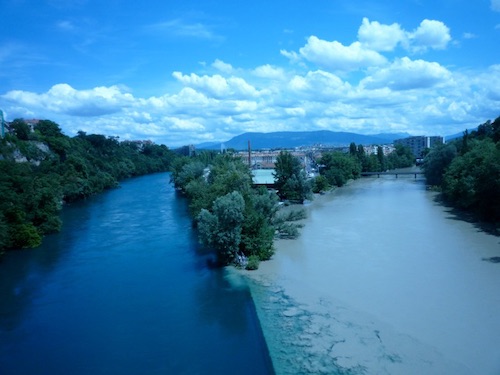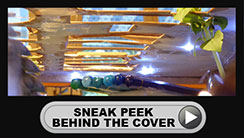
With the Tokyo Olympics all set to start as of 23rd July 2021, The Olympic Museum in Lausanne has an amazing exhibit around the Japanese culture of Mangas.
Believe it or not, the hosting of the 2020 Olympic Games in Tokyo was already mentioned in the 1980s in the science fiction manga Akira by Otomo Katsuhiro – 40 years in advance!
EXHIBITION
Numerous Japanese authors and publishers are featured in this exhibition, which makes the Sport X Manga project a rare and original experience. The Olympic Museum thanks Kodansha, Shogakukan and Shueisha for their kind assistance.
The exhibition is clustered around the Olympic and Paralympic mascots, placed in the centre. As ambassadors for the Games, they demonstrate the close link between manga and Japanese society.
The Manga for Dummies corner offers newbies an introduction to manga: its origins, history, codes and relationship with Japanese society and the world of art.
The nine 3D manga panels present nine major sports manga and help to trace the evolution of this cultural phenomenon in Japanese society from 1945 to the present day. The stories and characters featured in these manga illustrate the eras in which they were created. This section also shows to what extent the heroes had an influence on real life, and vice versa.

© Archives Fédération des coopératives Migros
Signal de Bougy leisure park in Vaud is celebrating its 50th anniversary. Created as a result of solidarity between the communes near the park and the Fédération des coopératives Migros, it has offered since its creation a play and rest area for the whole family. On the occasion of this jubilee, new animations respecting COVID-19 measures have been organized around the outdoor areas.
The history of Signal de Bougy began in 1969 when promoters wanted to acquire the Signal de Bougy hotel and its land to create a clinic. The surrounding communities opposed this project in order to keep the site accessible to the public. They then had to find a solution that would meet the maintenance needs of the 110 ha park and its development. They contacted the Fédération des coopératives Migros which, thanks to the support of the Pour-cent culturel Migros, founded the Fondation Pré vert du Signal de Bougy on July 9, 1970. The park was inaugurated one year later. The challenge was met: families and walkers could continue to enjoy this preserved site.

If you understand the term "bingo" in Scrabble® (when you use all seven of your tiles in one play), "a fork" in chess (a tactic whereby a single piece makes two or more direct attacks simultaneously), or "battle of primes" in Backgammon (a position in which both players have checkers trapped behind an opponent's prime), then you certainly know more than most people!
With school holidays coming up, and nowhere to go, you might consider taking up some old-fashioned board games. We present 3 options but you can pull out whatever takes your fancy. We asked Aurea Fagel from the Swiss English Scrabble Association SESA in Geneva; Zuzana Hevler-Kawaciuková, former chess female junior champion of Czechoslovakia 1989; and Alexandre Ben Lassin from the Association Genevoise de Backgammon to give us some expert advice.

In an article published recently at this link, we talked to Tanya Perret from LiveBreatheHike. She explained how the winter snowshoe aspect was taken over by another company. We caught up with Jason and Vivien Day from DaysAway Adventures.
Vivien explained, "We knew Tanya as an International Mountain Leader living and working in the area. She wanted to focus on multi day summer trips and we were looking for winter snowshoe work, so we got talking and reached a natural conclusion - Tanya didn’t want to let down her existing clients and knew that as fellow IML’s we could continue her high level of service."
Why did you start? What has been the inspiration?
We have always loved the mountains and are both UK Mountain Leaders and were also leading student expeditions abroad. A few years ago, we sold our narrowboat home in the UK and spent 2 years working towards the International Mountain Leader qualification (It’s difficult to get a narrowboat to big mountains!). Some of the training was in the Chablis region - it was not a hard decision to move to the Morzine region - the area is beautiful and we have made some great new friends.
Have you been working on this idea forever, or was it something that came to you recently?
Jason has been rock climbing and mountaineering for 35 years in the UK, Alps and Himalayas. Viv grew up in the remote Shetland Islands and has always had a strong connection with the outdoors through multi day trekking, wild camping and back packing in different parts of the world. We have both always loved the mountain environment and the sense of well being that it gives us. It felt like a natural progression to put down roots here and to enable others to feel both the physical and mental health benefits that being in the mountains brings.
What is the biggest obstacle you have had to overcome?
Getting to grips with the French paperwork and setting up a tourist-based business in a pandemic year! However, we are relentlessly optimistic and patient.

Remember to take time to visit some spectacular places in this region over the Christmas holiday. If you have a recommendation of a new place to visit or walk to take, please send us a photo and some details to include.
Directions for a walk to Bois de la Bâtie over the Junction:
Pass under the Pont de Sous-Terre, to the terminus of mouette line #6, which offers tourists a scenic 2½ hour trip down the Rhône. On the opposite side is a veritable cliff, which also has many pleasant trails along the bank. There are many benches where you can watch the river flow by, shaded by grand old trees. You will see a few row boats tied up here, the river becoming open to the public from this point on.
On your left are massive barns and in front you can see a very high bridge for trains (and pedestrians).
Another 300m or so and you will reach the junction of the Rhône and Arve rivers. You will notice that the Rhône (which is clear blue) is much swifter, and pushes into the Arve (muddy brown) with enough force to cause tiny whirlpools, above which alert ducks hover hoping to catch fish caught in the swirls.
Beyond the railroad bridge is a scene devoid of any trappings of civilization, more or less as it must have been eons ago. But now go back along the Arve side. Pass in front of the Canoe Club to find a path along the bank, this side is less developed, so be careful with youngsters, because there is no guard rail.
You will now come to a small wall requiring a bit (but just a bit) of climbing, then a pedestrian bridge across the Arve to the Bois de la Bâtie. Go up to the bridge along a tiny dirt path, and then - great for the youngsters - a few rungs to climb to reach the wooden deck of the bridge. In the middle, you will most always see a few fishermen.









